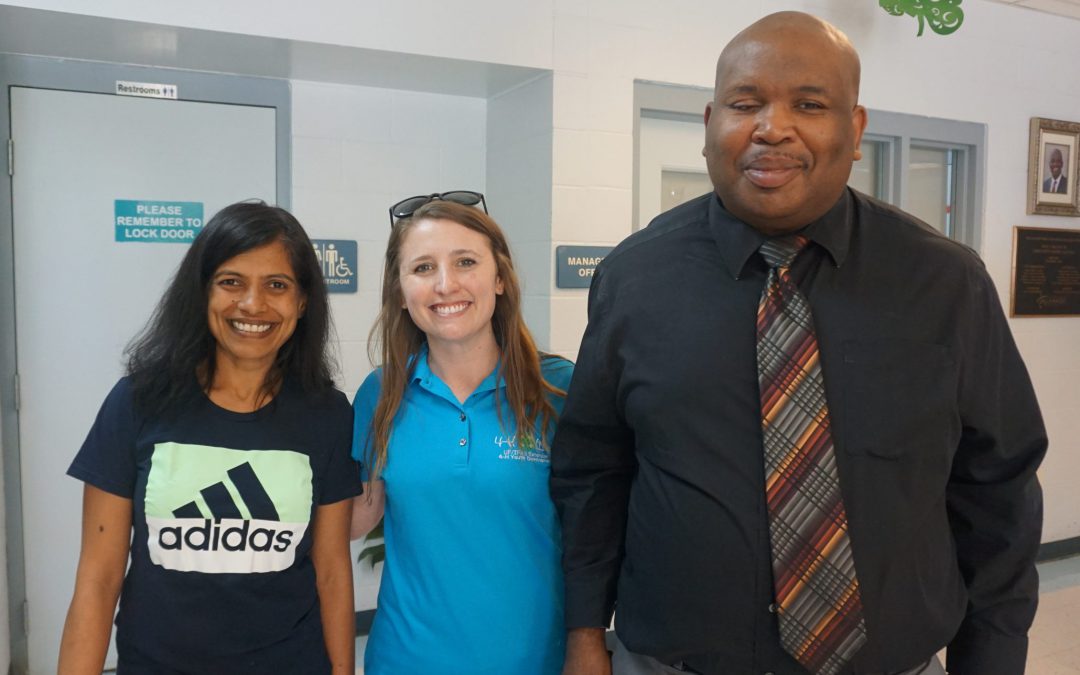
by Allison Leo | Apr 21, 2020
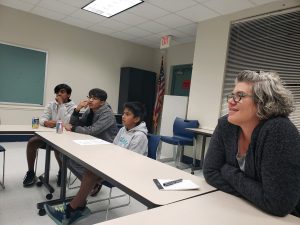
Missy Briggs, volunteer, helps lead a discussion during Leadership Club
At the beginning of the 4-H year, the Leon County Leadership Club was in need of two new club leaders. Sheeja George and Missy Briggs both stepped up to fulfill the role of club leaders and Leon County 4-H is lucky to have them! Sheeja is an Agricultural Scientist at the UF/IFAS North Florida Research and Education Center in Quincy. Missy is a Senior Performance Consultant with Capital City Bank in Tallahassee. They both have exceeded expectations and are everything you’d hope for in a 4-H Volunteer. You would never guess this is their first year leading a club!
When asked why she chose to volunteer with 4-H Sheeja expressed, “I feel strongly about using my time and any talent or resources that I have for things beyond self and family. Over the years this is a commitment we have shared as a family. That’s what keeps me motivated to volunteer in general.” Missy shared, “I enjoy volunteering with the 4-H Leadership Club because I am encouraged by the drive, teamwork, empathy, and respect the youth show for themselves, for each other, their community, and their world.”
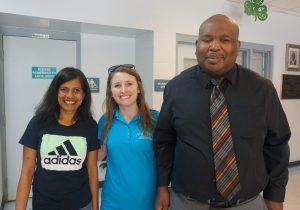
Volunteer, Sheeja, stands with Allison, 4-H Agent, and Bobby, guest
Leadership Club took on a major project this year with the guidance of Sheeja and Missy. This project was the Leon County 4-H Olympics. At the first club meeting, the members decided they wanted to host a brand-new event called the 4-H Olympics. Sheeja and Missy embraced the idea and successfully guided the members through the planning process. Each member had a specific role and all major decisions were the result of a group vote. During the “411 Teen Talk” radio show on WFSU, club member Stephen Hayes stated the most important thing he has learned from Leadership Club this year is how to work with people who have different ideas. Sheeja and Missy made sure that each club member had a voice in the planning process and during the day of the event. In an effort to raise money for the 4-H Olympics, Sheeja spent an entire Saturday with a few club members hosting a bake sale at the Leon County 4-H/Tropicana Speech Contest. The two club leaders were able to secure a guest motivational speaker during the event, which made the day even more special.
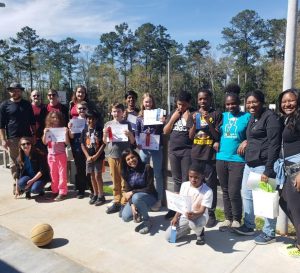
Club members after the 4-H Olympics
The first Leon County 4-H Olympics was a success and that could not have been accomplished without the two wonderful volunteer club leaders, Sheeja and Missy. They exemplify what it means to be a 4-H volunteer by growing true leaders in their community. Sheeja expressed “I thought the 4-H club would be a great avenue to work with youth and impact their lives in whatever little way I can in areas of life that will be important to them as they become young adults. This includes leadership, public speaking, being collaborative and team-players.”
Leon County 4-H is looking forward to see where Sheeja and Missy take Leadership Club next year!
To all of the volunteers in the district, thank you for all you do. Learn more about volunteering with Florida 4-H or contact your local UF/IFAS Extension to learn about 4-H in your county.
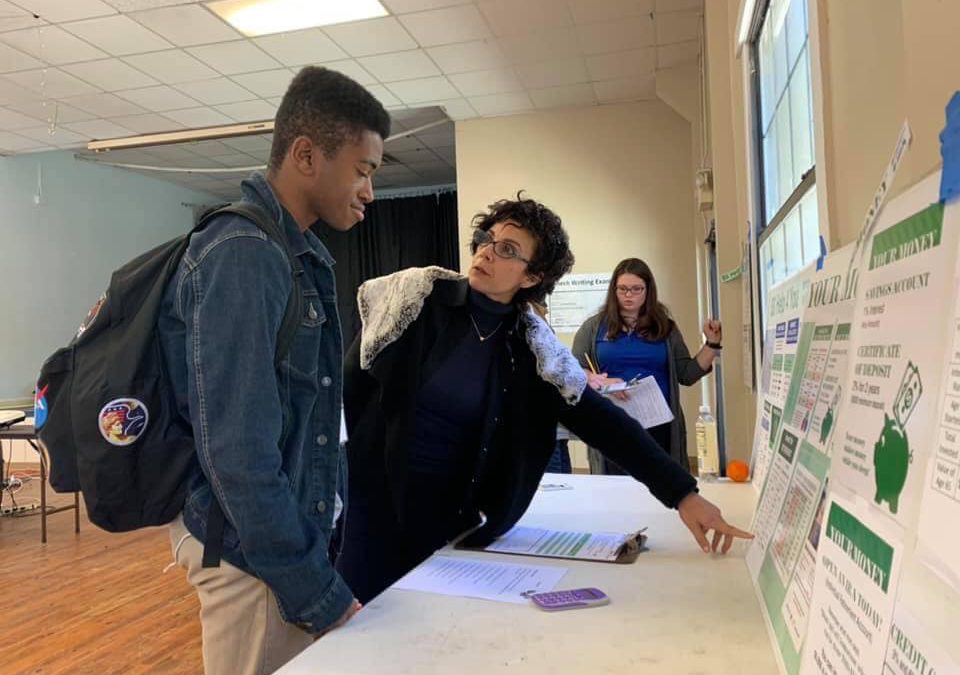
by Heather Kent | Apr 20, 2020
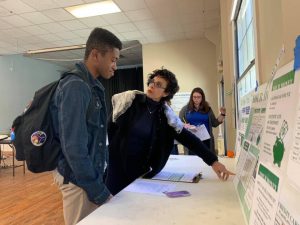
Volunteers from a local bank help teens learn financial management during a 4-H meeting
For more than 100 years, Floridians have been volunteering with 4-H to teach life skills to youth and to help make the best better in their communities. Florida is one of the few states in the southeast where the foundation of our program is built on community and project clubs. These 4-H clubs are where youth get the biggest benefit from 4-H membership and they wouldn’t be possible without our volunteers. There are nearly 10,000 volunteers working with 200,000 Florida 4-H members each year. Our volunteers come from many different backgrounds and walks of life, but they all have one thing in common- a desire to share their passion and skills with the next generation.
We are always grateful for the men and women who work so tirelessly to help youth become competent, caring citizens- but this month, we celebrate them to show our deep appreciation. April is National Volunteer Appreciation Month, and if you haven’t been following us on Facebook, then you’ve been missing our daily videos about how volunteers are impacting lives and communities in Florida. Each day this week, we will be sharing a story of a 4-H volunteer on our blog. We hope you draw inspiration from each of these individuals (as we do).
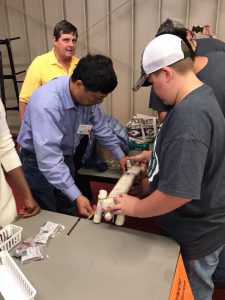
Engineers volunteer with our STEM Challenge at the North Florida Fair every fall.
If you are a 4-H parent or member, please thank your volunteer this week. A phone call, text, or handwritten note of thanks would make them feel appreciated and encouraged. If you have a skill or passion to share with young people, please consider being a volunteer for 4-H. We have a variety of roles to meet your interests and schedule. To find out more, contact your local UF IFAS Extension Office.
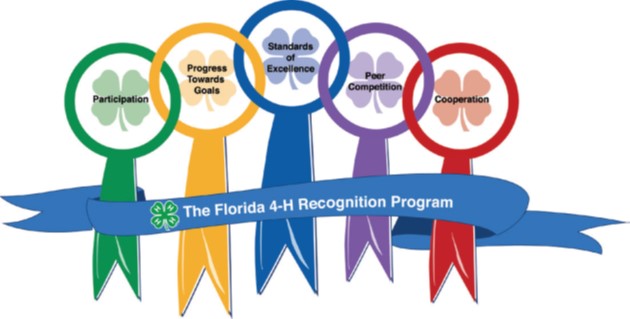
by Niki Crawson | Apr 17, 2020
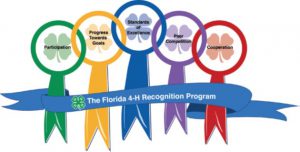 April’s 4-H Virtual Volunteer Leadership Academy on April 16, 2020 was on the importance of awards and recognition. We learned that recognition is important feedback that every individual needs as it helps to give a sense of belonging when a task or achievement occurs. Recognition builds self-esteem and allows for self-reflection and personal growth.
April’s 4-H Virtual Volunteer Leadership Academy on April 16, 2020 was on the importance of awards and recognition. We learned that recognition is important feedback that every individual needs as it helps to give a sense of belonging when a task or achievement occurs. Recognition builds self-esteem and allows for self-reflection and personal growth.
In 4-H, youth members, volunteers, parents, and community partners all want to know that they have been successful in their participation and/or contribution to the program and that they belong in 4-H. All members need to experience recognition for their efforts and that recognition is more meaningful when it occurs soon after it is earned. April’s 4-H Virtual Volunteer Leadership Academy webinar explained that the National 4-H recognition model is based on five areas for recognition: participation, progress toward goals, standards of excellence, competition and cooperation. It also shared helpful tips on creative, low cost ways of recognition that will still send a meaningful message of value and importance to members in the program.
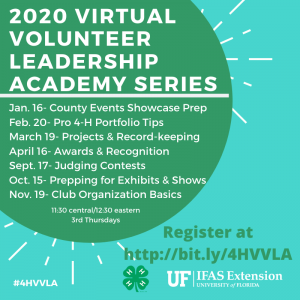 Registration Information
Registration Information
If you were unable to join us for April’s 4-H Virtual Volunteer Leadership Academy, it is not too late to register for future webinar sessions. And, as a registered participant, you will have access to all of the sessions available, including missed sessions, which can be viewed on demand.
Registration is required and can be found at http://bit.ly/4HVVLA Once registered, you can join each session live through Zoom. In addition, if you are unable to connect live, all monthly webinars will be available to you on demand as they are recorded. Register early – seats are limited to the first 100 registrants.
Future 4-H Virtual Volunteer Leadership Academy Webinars
- May – Club Tools for Online Use
- September*- Judging Contests
- October*- Preparing for Exhibits & Shows
- November* – Club Organization Basics
*Fall session registration will be available July 1, 2020.
Webinar Viewing Information
Join each live session simply with one click from your phone, tablet or computer, using the Zoom app. Once you have registered, you will receive email communication regarding the Zoom session links, dates and times.
4-H is one of the largest youth development programs in America with more than 6.5 million young people, ages 5-18, and 540,000 youth and adult volunteers. A variety of fun, educational, engaging activities are offered to teach the fundamental 4-H ideal of practical, “learn by doing” experiences which encourages youth to experiment, innovate and think independently. For information on how you can get involved with 4-H as a youth, volunteer, or supporter, please contact your local UF/IFAS Extension to learn about 4-H in your county.
Resources
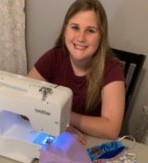
by Jena Gilmore | Apr 10, 2020
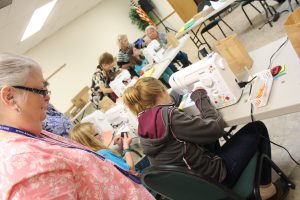
Volunteers inspiring young minds
Every Spring during Walton County Spring Break, a local group of women collaborate with the Walton County 4-H program to deliver a special interest day camp for youth in the area. This day camp, Stitch Perfect, was developed by the Chautauqua Quilters Guild and Jena Gilmore, the Walton County 4-H Agent. Stitch Perfect teaches youth participants everything from hand stitching, sewing tools, and equipment, to advanced sewing techniques.
Walton County 4-H has been extremely fortunate that this three-day day camp comes with a small cost, due to the Chautauqua Quilters Guild donating all materials, machines, and volunteer power while 4-H provides no-sew projects, environmental topics, STEM, and alternative sewing activities (crochet, weaving, etc). Due to the collaboration efforts and strong partnership with the Guild, this program has been one of the highest demanded annually! To serve more youth, 4-H expanded the reach of this project from 10 to 20 campers by dividing the youth into beginner and advanced classes.
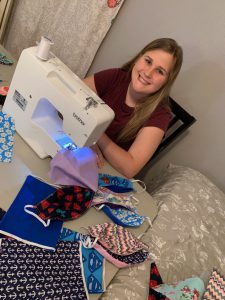
Macie’s Masterpiece Headquarters
Four years ago, Macie, a 4-H day camper, attended Stitch Perfect and fell in love with the art of sewing and quilting. The following year, she was so excited to attend Stitch Perfect and show off what she had been working on, however, her family planned a trip to Disney. Macie was distraught and actually shared with her mother she would’ve rather attended Stitch Perfect! While Macie still enjoyed her time at Disney, she has been able to attend Stitch Perfect in following years to gain skills in cross stitching, weaving, and advanced sewing.
In the wake of the COVID-19 pandemic and shortage of preventative equipment, Macie felt inspired to take action by utilizing the sewing skills she has learned over the years at 4-H Stitch Perfect with the Chautauqua Quilters Guild! She created her own work space in her bedroom, determined her pattern, secured her supplies and tools and went to work creating beautiful masterpieces in the form of surgical masks, to share with her community. Macie’s inspiration sparked after her mother, a postal worker, expressed the need and lack of supplies such as hand sanitizer, gloves, and face masks for postal workers. After all, they are on the front lines dealing with COVID-19 as they directly handle thousands of pieces of mail daily that have been handled tens of thousands of times prior to being delivered to their facility for sorting and delivery!
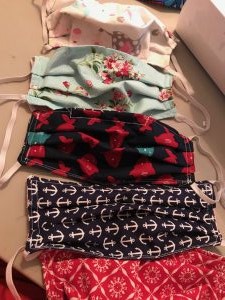
Macie’s Masterpieces
Macie is an outstanding example of just how impactful 4-H is on the lives of the youth that participate in 4-H programming. Like so many other programs available, 4-H Stitch Perfect helped Macie to develop and master essential life skills such as critical thinking, decision making, concern for self and others, etc. With over 70 different 4-H project areas from sewing, gardening, animal science, to computer science and rocketry, there are plenty of topics to work with youth to develop their life skills and make a meaningful impact like the Chautauqua Quilters Guild did on Macie with the 4-H Stitch Perfect program. If you would like to get involved in your local 4-H program as a volunteer, please visit http://florida4h.org to apply online or contact your local UF IFAS County Extension Office.
4-H is one of the nation’s most diverse organizations, open to all youth, ages 5-18, and available in every community. For more information on how youth can join or the many 4-H projects available, contact your local UF/IFAS County Extension Office, or visit http://florida4h.org today.
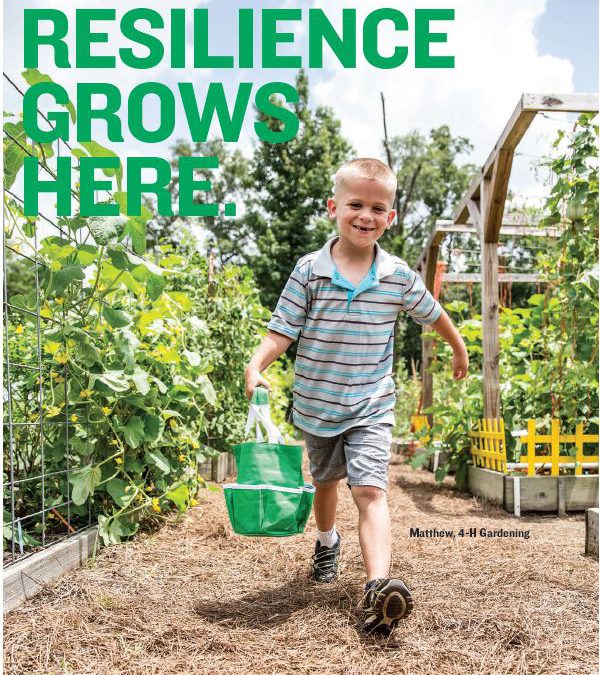
by Jena Gilmore | Mar 27, 2020
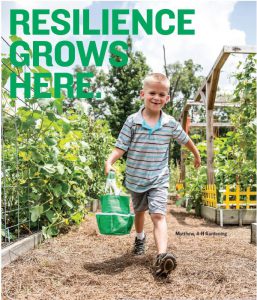 4-H is known for creating safe and inclusive environments. Many may argue this could be incredibly difficult now in the wake of the Coronavirus sweeping Florida, however, where some may see resistance, 4-H shows our resiliency. Across Florida, 4-H Agents have been brainstorming a multitude of ways to continue serving their clientele and practicing what we pledge by…
4-H is known for creating safe and inclusive environments. Many may argue this could be incredibly difficult now in the wake of the Coronavirus sweeping Florida, however, where some may see resistance, 4-H shows our resiliency. Across Florida, 4-H Agents have been brainstorming a multitude of ways to continue serving their clientele and practicing what we pledge by…
”My Head to clearer thinking, my Heart to greater loyalty, my Hands to larger service and my Health to better living, for my Club, my Community, my Country, and my World.
Within the Northwest District, there are currently many alternative programs to engage our 4-H members and volunteers during this time of “social distancing.” Interactive meetings, webinars, and interviews are provided through online streaming platforms that allow members to call in or connect via their smartphones, tablets and computers. Other alternatives include utilizing Youtube Channels or Facebook to stream recorded videos of activities for youth and adults. Consider exploring some of our many options below and join us on our new virtual adventure in experiential learning 4-H style!
Virtual Opportunities for Youth
Embryology, which is typically delivered as a school enrichment program, can now be viewed live on some county 4-H websites and Facebook pages. Agents and 4-H volunteers are also offering virtual livestock judging options so judging teams can continue to build their knowledge base for competitions along with Virtual Farm Tours in some areas. Other counties are banding together to deliver daily activities for youth via recorded series posted on their Facebook pages that highlight different themed days of the week.
- Escambia County 4-H Virtual Embryology Experience
- Register via their Eventbrite for full access to videos, webinars and resources
- 4-H Life Skills Masters Daily Series via Holmes & Walton 4-H County Facebook Pages
- Daily themes with activities include: Make It Mondays, Tasty Tuesdays, Water Wednesdays, Tackle It Thursdays & Fitness Fridays
- Washington County 4-H Project Showcase via Flipgrid
- Compete within your 4-H Showcase project area virtually with Mrs. Julie
- Jackson County Virtual Poultry Judging
- Jackson County Agriculture Virtual Day Camps
- This series is posted on their Facebook page and can be reviewed even after the event!
- Freezer & Fridge hacks with Calhoun County 4-H
- Learn tricks and tips of preserving all those extra groceries during your COVID-19 prep
- Liberty County 4-H detEGGtives investigate the 21-day countdown to Hatching with my Peeps
- Wakulla County 4-H shares Facebook Live daily updates and content from across Florida 4-H
- Leon County 4-H takes you on a virtual farm tour!
- Leon County 4-H Virtual Showcase
- Compete virtually and potentially win cash prizes for your clubs along with individual prizes and recognition…WIN:WIN!
Virtual Opportunities for Volunteers
Volunteer based programming has shifted to virtual as well! Currently, each month a webinar is hosted which highlights different topic areas related to delivering a well balanced 4-H program to your club members. Topics so far have included Preparing for County Showcase (aka County Events), Professional 4-H Portfolio Tips, and 4-H Project and Record Book Tips. You can register for the Virtual Volunteer Leadership Academy through our Eventbrite link and receive calendar invitations, reminders, and links so you can tune in LIVE or watch the recorded sessions later. Our team also provides you with all the resources discussed in each section. Registration is required and can be found at http://bit.ly/4HVVLA
4-H Virtual Volunteer Leadership Academy
- April- Awards & Recognition
- September*- Judging Contests
- October*- Preparing for Exhibits & Shows
*Fall session registration will be available July 1, 2020.
Subscribe to our NW District YouTube Channel for recorded sessions
If you would like to learn more about the 4-H opportunities available in your county, please contact your local UF IFAS County Extension Office, or visit http://florida4h.org. Now is a great time to join the 4-H family!
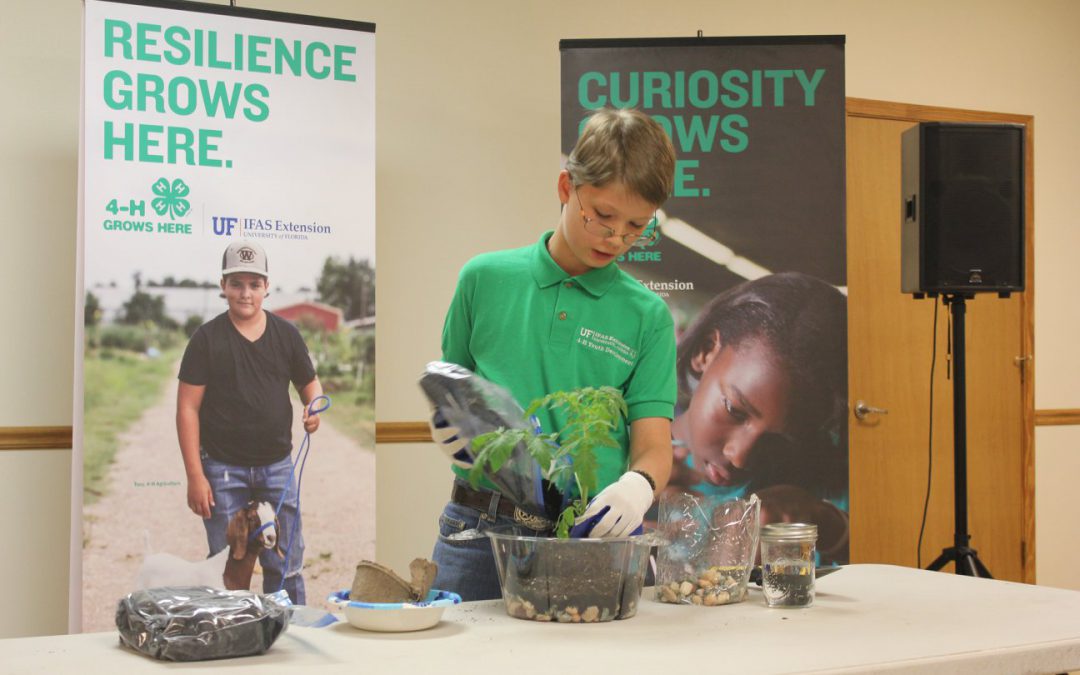
by Jena Gilmore | Mar 13, 2020
It’s finally here! Like many of us, you’ve probably been counting down the days since Christmas break for the next hiatus from the chaotic school day routine. Now, with Spring Break upon you…what are you going to do with the kids while working or running errands that have piled up and marking off that “to do” list? It’s time to “phone a friend,” your Positive Youth Development friends (aka 4-H Agents) that is!
Set yourself up for success this Spring Break by planning some fun projects to complete with your youth. Many of these projects they can do independently, or with a group of friends, or tackle with the whole family. 4-H makes learning FUN through experiential learning opportunities the whole family can enjoy!
4-H PROJECT LEARNING
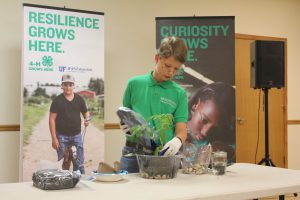
Walton County 4-H’er during his container gardening Demonstration at County Showcase!
4-H members can choose from more than 50 projects that focus on science, engineering and technology, animals and agriculture, food & nutrition, outdoor adventures, marine science, public speaking, art and wildlife. 4-H learning is experiential- or “hands on learning,” where youth get to interact with the curriculum or subject matter being taught/explored.
Ultimately, youth learn life skills and use these skills to give back to their communities. Youth set goals, keep records and can participate in events and activities on a county, district, state, and national level to expand their learning! They can explore the various projects and programs 4-H offers and choose one that interests them.
4-H has three major priority programs: Science, Citizenship & Leadership, and Healthy Living. Please check out the resources available in each of these areas and consider exploring other aspects with your local 4-H program. Your local 4-H office may be hosting “day camps,” or daytime activities over Spring Break which youth can register for and spend the day in a safe, inclusive environment exploring with youth their age!
Below are a few projects youth can dig into with many simple household items. For a greater challenge, expand on these projects so that youth can create their own demo to share with their local 4-H program during club meetings or County Showcase to earn more credit, experience, and leadership within their clubs!
GARDENING
A perfect project for youth of all ages…the newspaper pot! Not only are you recycling, but you can learn about propagating plates, soil science, and so much more with some extra research. Turn it into a family challenge to see who can make theirs the fastest, the most decorative, the largest…the possibilities are endless with this project!
https://nwdistrict.ifas.ufl.edu/4hn/files/2015/04/HANDOUT_PottedPlantColorPrint.pdf
HEALTH
In the midst of all the wacky weather lately, take some time to explore different aspects of one of our H’s…Health! The links below are just a few within a series of activities focused on Healthy Living. In the “Let’s Go Green” series, youth will learn how to create safe alternatives to chemical cleaning solutions and YOU (the guardians) get to benefit as they “test” the effectiveness of these cleaners throughout the house. Make it a challenge…encourage them to test different areas, the kitchen, the bathroom, the windows…have you caught our major hint yet? Additionally, youth can expand on their learning by using the link below to create their own newspaper to showcase their findings. Utilize the “Headlines for Health Introductions” to explore more activity options like “Let’s Go Green.”
Make a Newspaper: http://edis.ifas.ufl.edu/pdffiles/4H/4H28000.pdf
4-H is one of the nation’s most diverse organizations, open to all youth, ages 5-18, and available in every community. For more information on how youth can join or the many 4-H projects available, contact your local UF/IFAS County Extension Office, or visit http://florida4h.org today.


















